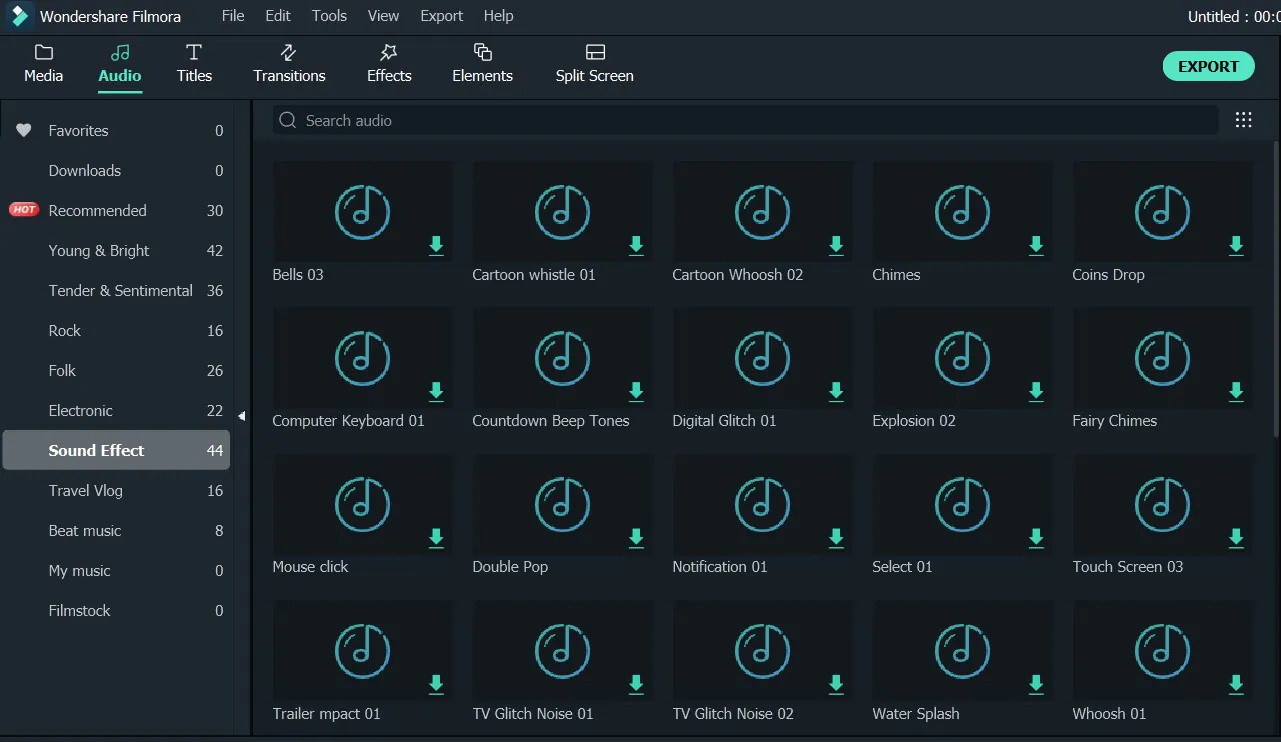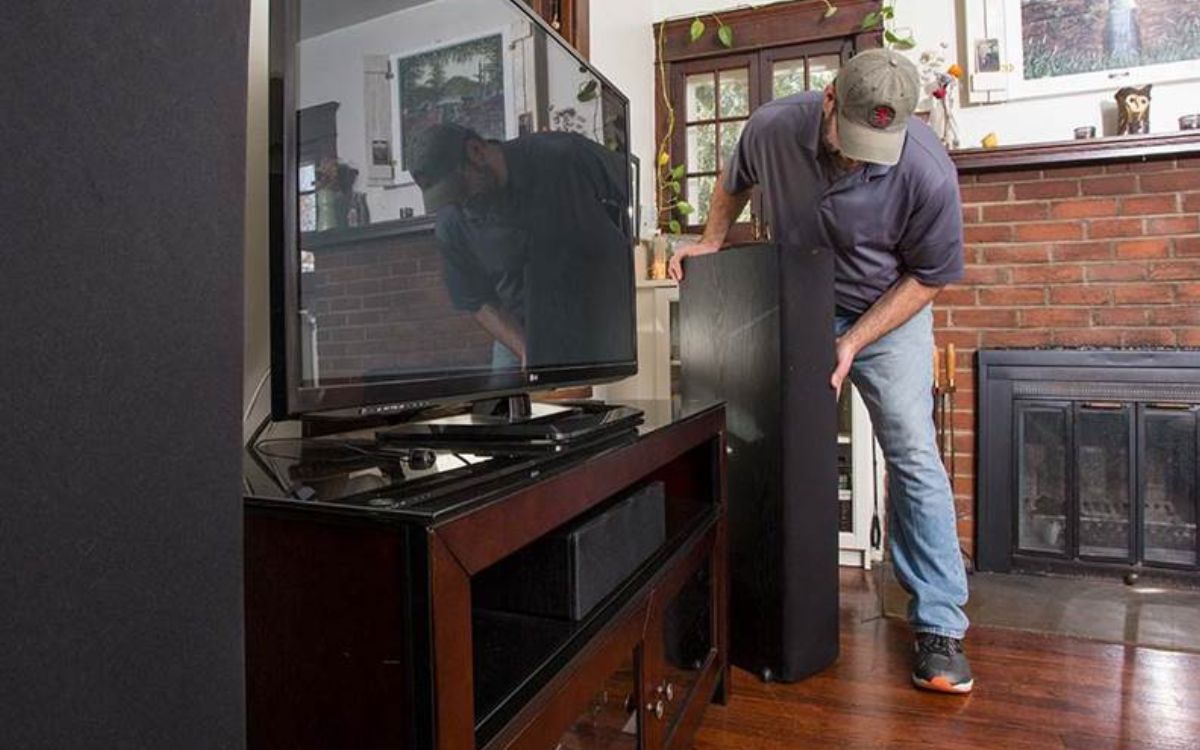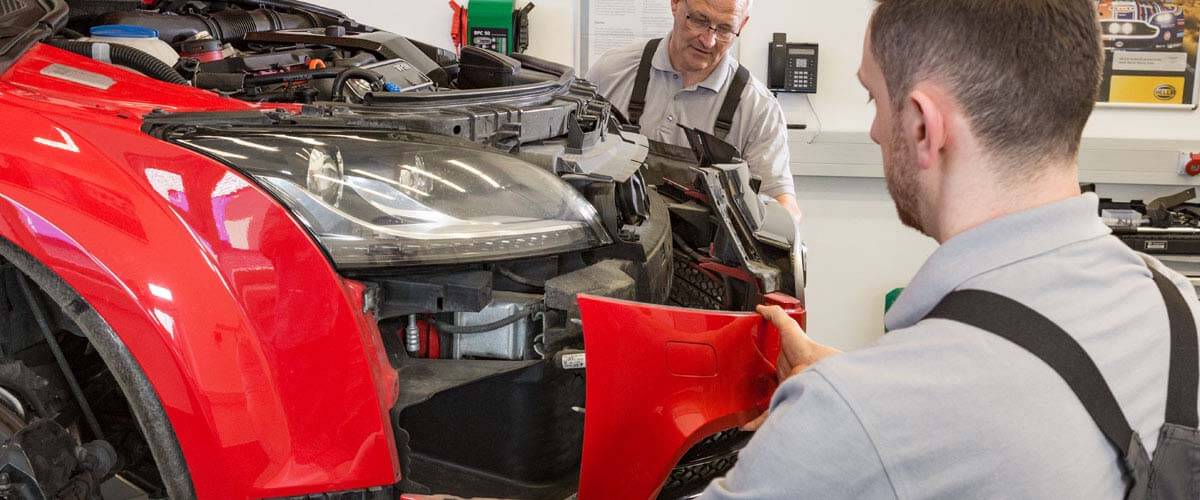Home>Production & Technology>Sound>How To Sound Smart In Your Ted Talk


Sound
How To Sound Smart In Your Ted Talk
Published: December 18, 2023
Learn the art of sounding smart and captivating your audience in your Ted Talk. Discover powerful techniques to master the art of sound.
(Many of the links in this article redirect to a specific reviewed product. Your purchase of these products through affiliate links helps to generate commission for AudioLover.com, at no extra cost. Learn more)
Table of Contents
Introduction
When it comes to giving a TED Talk, one of the keys to success is not just having valuable insights to share, but also being able to present your ideas in a way that captivates the audience. One aspect that can greatly enhance your talk is the way you sound. By sounding smart, confident, and engaging, you can keep the audience hooked and make a lasting impression.
But how exactly can you project an aura of intelligence and expertise while delivering your TED Talk? In this article, we will delve into the strategies and techniques that can help you sound smart and command attention during your presentation. From crafting a compelling opening to engaging with the audience, we will cover it all.
Before we dive into the specific tips and tricks, it is important to note that the goal is not just to sound intelligent for the sake of it, but rather to deliver your message effectively and leave a lasting impact. The aim is to connect with your audience, inspire them, and make your ideas memorable.
So, whether you are a seasoned public speaker or preparing for your first TED Talk, read on to discover how you can sound smart, persuasive, and captivating during your next presentation.
Know Your Topic
One of the key elements of sounding smart in your TED Talk is having a thorough understanding of your topic. When you have a deep knowledge of the subject matter, it not only boosts your confidence but also allows you to speak with authority and credibility.
Start by conducting extensive research on your topic. Dive into books, academic papers, articles, and other reliable sources to gather information and gain a comprehensive understanding. Take notes, highlight key points, and organize your findings in a logical manner.
Additionally, it’s important to stay up to date with the latest developments and trends in your field. Attend conferences, join professional networks, and engage in discussions with experts to expand your knowledge and keep your finger on the pulse of the industry.
As you gather information, identify the key points and concepts that are most relevant to your TED Talk. Narrow down your focus and prioritize the information that aligns with your main message. This will help you present a coherent and concise presentation that resonates with the audience.
Once you have a solid grasp of your topic, aim to become an expert in it. Familiarize yourself with different perspectives, theories, and viewpoints surrounding the subject matter. This will allow you to present a well-rounded and nuanced viewpoint during your talk.
Lastly, be prepared to answer questions and engage in discussions about your topic. Anticipate potential queries and challenges that may arise and develop thoughtful responses. This will further demonstrate your expertise and make you appear knowledgeable and well-prepared.
In summary, knowing your topic inside and out is crucial for sounding smart during your TED Talk. Conduct thorough research, stay updated, and become an expert in your field. By doing so, you will speak with confidence and authority, captivating your audience and leaving a lasting impression.
Craft a Compelling Opening
The opening of your TED Talk sets the tone for the entire presentation and is crucial for capturing the audience’s attention from the start. To sound smart and engage your listeners right from the beginning, it’s important to craft a compelling opening.
One effective technique is to start with a thought-provoking question or a compelling statistic that highlights the importance of your topic. This creates an immediate sense of curiosity and gets the audience thinking. For example, if your talk is about the future of renewable energy, you could begin by asking, “Did you know that by the year 2050, renewable energy sources are projected to overtake fossil fuels as the primary source of electricity worldwide?” This grabs the audience’s attention and sets the stage for your presentation.
Another approach is to begin with a powerful anecdote or personal story that relates to your topic. This allows you to connect with the audience on an emotional level and draw them into your narrative. For instance, if you’re giving a TED Talk about the importance of mental health, you could start by sharing a personal experience that highlights the impact of mental health issues.
In addition, consider using a provocative statement or a bold statement to pique the audience’s interest. This can be a controversial viewpoint or an unconventional perspective that challenges their assumptions. However, be careful to maintain a respectful and inclusive tone, ensuring that your audience feels engaged rather than alienated.
It’s also important to establish your credibility early on. Highlight your credentials, experience, or unique perspective that makes you qualified to speak on the topic. This helps to build trust and convinces the audience that you have valuable insights to share.
Lastly, aim for clarity and conciseness in your opening. Avoid using jargon or technical terms that might confuse the audience. Instead, strive for simplicity and clarity to ensure that your message resonates with all listeners, regardless of their background or expertise.
By crafting a compelling opening, you will immediately grab the audience’s attention and establish yourself as an engaging and intelligent speaker. By using thought-provoking questions, powerful anecdotes, provocative statements, and establishing your credibility, you will set the stage for a captivating TED Talk.
Utilize Visuals Effectively
In a TED Talk, visuals can be powerful tools for enhancing your message and making it more engaging and memorable. By utilizing visuals effectively, you can not only sound smart but also visually demonstrate your ideas to the audience.
First and foremost, choose visuals that are relevant and support your key points. Whether you use slides, videos, or props, ensure that each visual element adds value to your presentation. Avoid cluttering your visuals with too much text or unnecessary details that might distract the audience.
When creating slides, keep them clean, simple, and visually appealing. Use bold headlines, concise bullet points, and high-quality images to convey your message effectively. Avoid overcrowding your slides with excessive text. Instead, use visuals to complement and reinforce your spoken words.
Additionally, consider incorporating data visualizations such as charts, graphs, and infographics to present complex information in a visually appealing and easily understandable format. This not only makes your talk more engaging but also demonstrates your grasp of the data and adds credibility to your arguments.
When using videos or props, ensure that they are well-prepared and seamlessly integrated into your presentation. Practice using them beforehand to ensure smooth transitions and accurate timing. Videos can be used to showcase demonstrations, real-life examples, or interviews that support your points. Props, on the other hand, can be used to provide a tactile representation of your ideas, making them more relatable to the audience.
Lastly, always provide clear explanations and context for your visuals. Describe what the audience is seeing and how it relates to your topic. This helps the audience understand the purpose and relevance of the visuals and ensures they don’t miss any key points you are trying to convey.
By utilizing visuals effectively, you not only engage the audience visually but also enhance their understanding and retention of your message. Visuals can help you sound smart by providing tangible evidence, supporting your arguments, and making complex ideas more digestible to the audience.
Master Body Language
In addition to the words you speak, your body language plays a crucial role in how smart and confident you appear during your TED Talk. Mastering your body language can help you convey your message effectively and connect with the audience on a deeper level.
One of the most important aspects of body language is maintaining good posture. Stand tall with your shoulders back and your head held high. This not only exudes confidence but also helps with proper breathing and projection of your voice. Avoid slouching or crossing your arms, as these can make you appear closed-off and unapproachable.
Another key element is eye contact. Making eye contact with the audience shows that you are present, engaged, and confident. Scan the room and establish a connection with different individuals. This helps to create a sense of intimacy and connection with the audience, making them more receptive to your ideas.
Use hand gestures to emphasize your points and add emphasis to your speech. Avoid excessive or distracting gestures, but instead, use deliberate and purposeful movements that align with your words. This helps to enhance your message and make it more memorable.
Body language also includes your facial expressions. Practice smiling genuinely and naturally, as it can help create a positive and approachable presence. Show enthusiasm and passion through your facial expressions, as this will add credibility and authenticity to your talk.
Additionally, be mindful of your body movement and stance. Move with purpose and intention, avoiding unnecessary fidgeting or pacing. Use the stage to your advantage, allowing your movements to enhance your storytelling and engage the audience. However, be sure not to overdo it or distract from your main message.
Lastly, pay attention to your breathing and voice modulation. Take deep breaths to calm any nerves and speak with clarity and confidence. Vary your tone and volume to emphasize important points and keep the audience engaged.
By mastering your body language, you can enhance your presence on stage and project an image of intelligence and confidence. Good posture, eye contact, purposeful gestures, genuine facial expressions, and intentional movement all contribute to creating a powerful and captivating presence during your TED Talk.
Incorporate Storytelling
Storytelling is a powerful tool that can greatly enhance your TED Talk, making it more relatable, engaging, and memorable. By incorporating storytelling into your presentation, you not only sound smart but also connect with the audience on an emotional level, leaving a lasting impact.
Start by identifying personal anecdotes or experiences that relate to your topic. These stories serve as a bridge between your ideas and the audience, allowing them to see the human side of your message. Whether it’s a moment of triumph, a lesson learned from failure, or a personal struggle, sharing your stories adds authenticity and credibility to your talk.
When crafting your stories, focus on capturing the audience’s attention from the beginning. Start with a compelling hook or an intriguing setup that immediately draws them in. Use descriptive language and vivid details to create a sense of immersion, transporting the audience into the narrative.
Ensure that your stories have a clear message or underlying theme that reinforces your main points. Connect the dots between your personal experiences and the broader ideas you want to convey. This helps the audience understand the significance of your stories and how they relate to the overall message of your talk.
Additionally, consider incorporating stories about real-life examples or case studies that support your arguments. These can be stories of individuals, companies, or communities who have experienced the impact of your topic firsthand. By sharing these stories, you add credibility to your talk and demonstrate that your ideas have real-world relevance.
Furthermore, use storytelling techniques such as suspense, humor, or emotional resonance to captivate the audience and keep them engaged. Create tension, build anticipation, and deliver surprises to maintain their attention and drive your message home. Injecting humor at appropriate moments can help lighten the mood and create an enjoyable experience for the listeners.
Lastly, ensure that your storytelling is concise and well-paced. Avoid getting caught up in unnecessary details or going off on tangents. Stay focused on the main narrative thread and deliver your stories in a way that flows smoothly alongside your main points.
By incorporating storytelling into your TED Talk, you not only sound smart but also create a deeper connection with the audience. Through personal anecdotes, real-life examples, and engaging storytelling techniques, you will make your ideas more relatable, memorable, and impactful.
Use Analogies and Metaphors
Analogies and metaphors are powerful linguistic tools that can help you convey complex ideas in a simple and relatable manner. By incorporating these figurative devices into your TED Talk, you can sound smart by effectively explaining abstract concepts and making them more accessible to the audience.
Start by identifying the key concepts or ideas in your talk that may be challenging for the audience to grasp. These can be technical terms, complex theories, or abstract notions. Then, think about everyday experiences, objects, or situations that can serve as analogies or metaphors to illustrate those concepts.
An analogy is a comparison between two things that highlights their similarities. By finding a relatable analogy, you can help the audience understand your point by connecting it to something familiar. For example, if your topic is about the functioning of the brain, you can use an analogy like “The brain is like a complex computer system, where each neuron is akin to a mini-circuit that processes and transmits information.”
Metaphors, on the other hand, are figures of speech that describe one thing in terms of another, suggesting a hidden similarity. Metaphors can evoke emotions, add depth, and create vivid imagery. For instance, if your talk is about leadership, you can use a metaphor like “A leader is not just a captain of a ship, but also the lighthouse that guides and inspires others.”
When using analogies and metaphors, ensure that they are relevant and resonate with your audience. Choose analogies that align with their experiences and backgrounds. Simplify complex ideas by breaking them down with relatable comparisons that offer a fresh perspective.
Additionally, consider the power of visual aids in enhancing the impact of your analogies and metaphors. Use illustrations, diagrams, or props to visually represent the analogy, making it even more tangible for the audience.
However, use analogies and metaphors sparingly and purposefully. Avoid overloading your talk with excessive figurative language, as it may confuse or distract the audience. Be mindful of cultural and contextual appropriateness, ensuring that your analogies and metaphors are inclusive and easily understood by all listeners.
By incorporating analogies and metaphors into your TED Talk, you can effectively simplify complex ideas, making them more relatable and understandable for your audience. These figurative devices help you sound smart by presenting your ideas in a creative and engaging manner that resonates with the audience on a deeper level.
Deliver with Confidence and Conviction
In a TED Talk, how you deliver your message is just as important as the content itself. To sound smart and captivate the audience, it’s essential to deliver your talk with confidence and conviction.
First and foremost, believe in yourself and your ideas. When you have confidence in what you’re saying, it will naturally come through in your delivery. Spend time preparing and rehearsing your talk to build your confidence and ensure that you are well-prepared.
Pay attention to your body language as you speak. Stand tall, make eye contact, and use open gestures to exude confidence. Allow your passion for the topic to shine through in your facial expressions and voice.
Speak with clarity and enunciate your words. Avoid mumbling or speaking too quickly. Practice your pacing to maintain a steady and engaging rhythm. Vary your tone and inflection to emphasize important points and keep the audience interested.
Use pauses effectively. Pausing after key statements or before important points can create a sense of anticipation and allow the audience to digest the information. Pausing also gives you a chance to gather your thoughts and ensure that your words have the impact you intend.
Connect with the audience by engaging them directly. Ask rhetorical questions, encourage participation, or invite them to think along with you. This interaction helps to create a dynamic and engaging atmosphere.
Be mindful of your nervousness and turn it into excitement. Channel your adrenaline into positive energy and let it fuel your delivery. Remember that nerves are natural, and the audience is there to support you and learn from your insights.
Confidence also comes from being prepared to handle potential questions or challenges. Anticipate possible inquiries and have well-thought-out responses. This will further showcase your expertise and enable you to deliver your talk with conviction.
Lastly, let your passion for the topic shine through. When you genuinely believe in what you’re saying, it resonates with the audience. Infuse your delivery with enthusiasm, energy, and a genuine desire to share knowledge and inspire change.
By delivering your TED Talk with confidence and conviction, you not only sound smart but also captivate and inspire the audience. With a combination of well-preparedness, intentional body language, clear enunciation, audience engagement, and genuine passion, you will leave a lasting impression and make your talk truly memorable.
Engage with the Audience
Engaging with the audience is a key component of delivering a successful TED Talk. By actively involving the audience, you not only sound smart but also create a connection that keeps them invested in your presentation. Here are some strategies to effectively engage with your audience:
Start by establishing a rapport with the audience from the beginning of your talk. Use a friendly and approachable tone, make eye contact, and smile genuinely. This helps create a warm and inclusive atmosphere.
Encourage audience participation by incorporating interactive elements into your talk. Pose thought-provoking questions or ask for a show of hands to gauge opinions and create a sense of involvement. This fosters a two-way dialogue and ensures that your talk feels more like a conversation than a monologue.
Consider sharing personal stories or anecdotes that resonate with the audience. This allows them to relate to your experiences on a deeper level and fosters a sense of shared connection. Additionally, invite the audience to share their own stories or perspectives on the topic, either during the talk or in a post-talk discussion.
Utilize technology to engage the audience. Encourage live tweeting using a designated hashtag, display audience questions on a screen, or conduct interactive polls during your talk. This not only keeps the audience engaged but also provides valuable feedback and insights.
Be a good listener. When an audience member asks a question or makes a comment, listen attentively and respond thoughtfully. Show appreciation for their contribution and acknowledge their input. This demonstrates respect and creates a positive environment for meaningful interaction.
During your talk, create moments of pause for the audience to reflect, discuss with their neighbors, or jot down their thoughts. This provides opportunities for deeper engagement and ensures that the audience remains active participants in the conversation rather than passive listeners.
Adapt your talk based on audience feedback and reactions. Pay attention to non-verbal cues, such as nodding, smiling, or leaning in, which indicate interest and understanding. Use these cues to tailor your delivery and emphasize points that resonate with the audience.
Finally, make yourself approachable after your talk. Stay for Q&A sessions, engage in discussions, and be open to connecting with audience members. This further solidifies the connection and allows for continued dialogue beyond the confines of your talk.
By actively engaging with the audience, you not only sound smart but also create a memorable and impactful experience. Through interaction, shared experiences, and active listening, you foster a sense of community and ensure that your ideas resonate long after the talk has ended.
Summarize and Conclude Effectively
As you reach the end of your TED Talk, it’s crucial to summarize your key points and conclude in a powerful and memorable way. Effectively summarizing and concluding your talk not only reinforces your main ideas but also leaves a lasting impression on the audience.
Start by summarizing the main points you discussed throughout your talk. Concisely restate the key takeaways and insights you want the audience to remember. This reaffirms the main message of your talk and ensures that your ideas stick with the audience long after your presentation.
Avoid simply restating your main points verbatim. Instead, provide a fresh perspective or a thought-provoking summary that highlights the broader implications of your talk. This helps the audience see the bigger picture and understand the significance of your ideas in a wider context.
In addition to summarizing, conclude your talk with a memorable ending. Craft a closing statement that is impactful and leaves a lasting impression. This could be a powerful quote, a call to action, or a personal anecdote that encapsulates the essence of your talk.
Consider leaving the audience with a thought-provoking question that encourages further reflection or prompts them to take action. This ensures that your talk resonates beyond the immediate moment and motivates the audience to continue exploring the topic on their own.
End on a positive and optimistic note. Leave the audience feeling inspired, motivated, or empowered. Remind them of the potential for change or the impact they can make by applying the ideas you shared. This creates a sense of optimism and possibility that lingers with the audience.
Lastly, express gratitude to the audience for their time and attention. Acknowledge their presence and appreciation for their engagement throughout your talk. This creates a sense of connection and leaves a positive impression on the audience.
In summary, effectively summarizing and concluding your TED Talk allows you to reinforce your key points, leave a lasting impression, and inspire action. By providing a concise summary, crafting a memorable closing statement, and ending with optimism and gratitude, you ensure that your talk resonates with the audience long after you’ve left the stage.
Final Thoughts
Delivering a TED Talk is an incredible opportunity to share your knowledge, insights, and ideas with a global audience. By incorporating the strategies mentioned in this article, you can sound smart, captivate the audience, and leave a lasting impact.
Remember that the goal is not just to impress the audience with your intelligence, but to connect with them on a deeper level. Strive to inspire, educate, and ignite change through your talk.
Take the time to thoroughly research and understand your topic, ensuring that you have a strong foundation of knowledge to draw upon. Craft a compelling opening that grabs the audience’s attention and establishes your expertise. Utilize visuals effectively to enhance your message and make it more memorable.
Mastering body language allows you to exude confidence and engage with the audience on a more personal level. Incorporate storytelling to create a connection and illustrate your ideas in a relatable way. Use analogies and metaphors to simplify complex concepts and make them more accessible.
Deliver your talk with confidence and conviction, utilizing effective pacing, engaging tone, and audience interaction. Summarize and conclude effectively to reinforce your main points and leave a powerful impression.
Lastly, enjoy the process and embrace the opportunity to share your ideas with the world. Be authentic, passionate, and genuine. Your enthusiasm and authenticity will shine through, making you more relatable and impactful.
Remember, a successful TED Talk goes beyond sounding smart. It is about making a difference and leaving a legacy. Embrace the challenge, connect with your audience, and inspire change through your powerful and engaging presentation.











